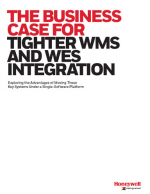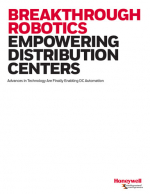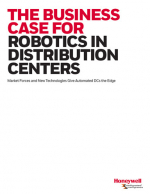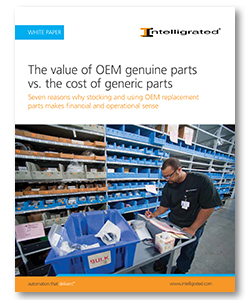The Value of OEM Genuine Parts vs. the Cost of Generic Parts
Seven reasons why stocking and using OEM replacement parts makes financial and operational sense.
Distribution center and warehouse operators invest heavily in capital projects to satisfy growing customer demand, but often neglect to adopt a lifecycle strategy to realize the true value of that asset over its useful life.
When it comes to unplanned downtime of mission-critical material handling systems, the results can be crippling. Operations come to an abrupt halt, order deadlines are missed and some of that hard-earned customer satisfaction and loyalty is lost.
With pressure to reduce operational costs, it may be tempting to cut corners with non-original equipment manufacturer (OEM) parts. These parts, however, are often risky and can cause expensive and stressful system failure.
Log in to download this paper.
What’s Related
Related Companies
Honeywell Intelligrated
Related Topics
Automation
AutomationDistribution CenterHoneywell IntelligratedWarehouse|DC
All topics
News





Labor Management Systems Solutions Increasingly Important Even With the Move to More Autom...
Labor management system solutions are different today than those a decade ago, they integrate with more systems, have mobile user interfaces, and use advanced analytics, they are i...
Honeywell Intelligrated - Connected Assets
Connected Assets Limit Downtime and Maximize Profits
Honeywell Intelligrated Showcases Next-Generation DC Technology
9 Building Blocks of Operational Success
More News
Resources

The Business Case for Tighter WMS and WES Integration
Exploring the Advantages of Moving These Key Systems Under a Single-Software Platform

Breakthrough Robotics Empowering Distribution Centers
Advances in Technology Are Finally Enabling DC Automation

The Business Case for Robotics in Distribution Centers
Market Forces and New Technologies Give Automated DCs the Edge
More Resources
Favorites

How Does IKEA’s Inventory Management Supply Chain Strategy Really Work?
Each IKEA store is huge and holds more than 9,500 products! How in the world does IKEA offer so...

Starbucks as an Example of the Value Chain Model
The concept of value chain helps to understand and segregate the useful (which help in gaining a competitive...

7 Principles of Supply Chain Management Explained
Would you like to understand supply chain management concepts but don't have time to study from a textbook?...

Is Apple’s Supply Chain Really the No. 1? A Case Study
How Complex is Apple's Supply Chain? Some people in the blogosphere said that Apple's Supply Chain is not...

